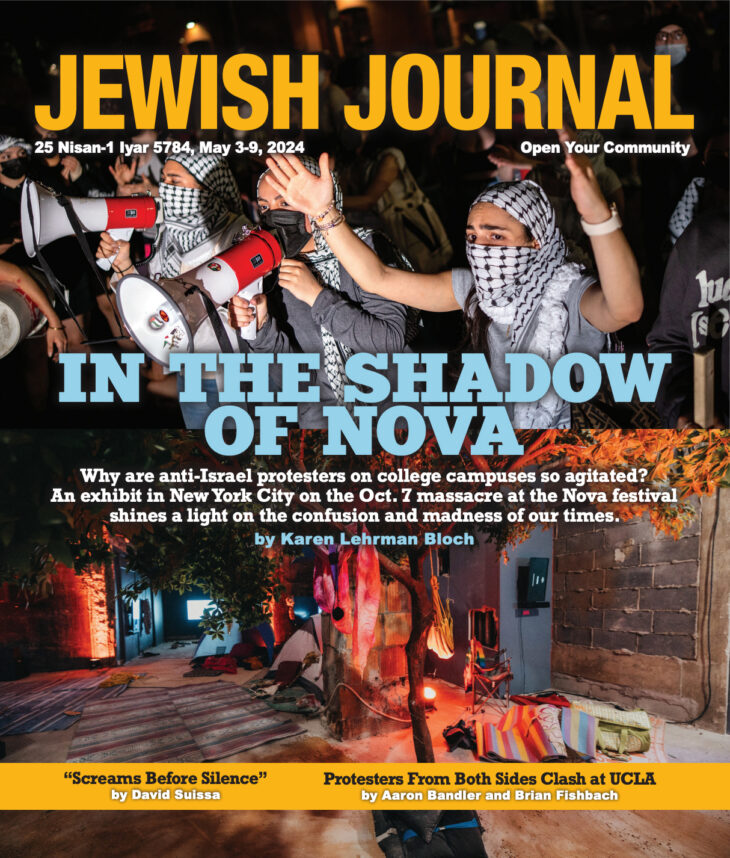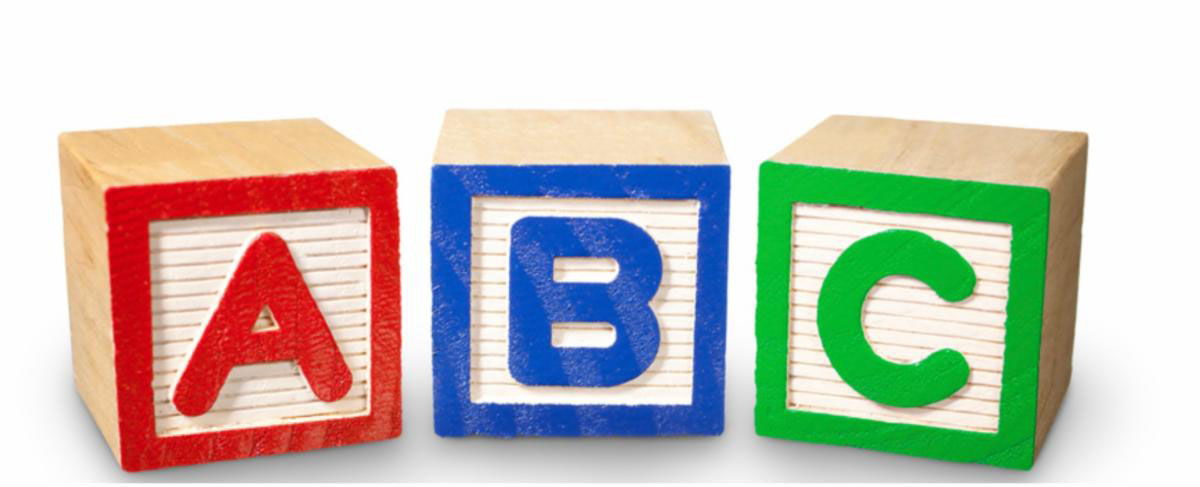
Jonathan Oswaks, who witnessed the altercation that led to the death of 69-year-old Jewish man Paul Kessler, recounted the incident on Sunday to reporters in a Tuesday press conference, saying he suddenly saw “a punch” and “a white megaphone flying through the air.”
Speaking at the intersection of Westlake Boulevard and Thousand Oaks Boulevard where the altercation occurred, Oswaks––who is Jewish and works as an engineer––explained that he had first met Kessler a couple weeks ago through the neighborhood app Nextdoor to counterprotest a pro-Palestinian protest in the area on October 29. Oswaks said that he and Kessler were the only pro-Israel counterdemonstrators that day; he claimed they were harassed by some of the protesters and that at one point, Oswaks was pushed into the street. Oswaks said he got the protester who pushed him on camera, and when he put the camera down, the protester flashed a gun at Oswaks and tailed him afterwards. Oswaks later claimed in the press conference that law enforcement asked him to identify the protester with a gun; Oswaks said he couldn’t because the protesters change the masks and hoods they’re wearing when they go to a different corner of the intersection. However, he said he had a photo of the man who allegedly flashed a gun at him.

Oswaks and Kessler decided to try to organize a stronger pro-Israel counterprotest a week later, using Nextdoor (which Oswaks claimed banned him from the platform for doing so). Oswaks and Kessler arrived in the area about an hour or an hour-and-a-half before the pro-Palestinian protest was scheduled to begin at 3 pm. During this time, while Oswaks and Kessler were sitting on a fountain in front of Paul Martin’s American Grill, Oswaks received a phone call from a friend that his face had appeared on a social media live and that he’s “being watched.” Oswaks looked up and saw three men sitting on a bench nearby. “One of those men I recognize as the murderer,” Oswaks alleged. “The other man was an extreme agitator. The other fellow was just a young fellow, I couldn’t tell much about him.”
At this point, Oswaks and Kessler went from the fountain to the Westlake-Thousands Oaks Boulevard intersection to meet with Oswaks’ friends who brought three flags: an Israeli flag, an American flag and the Gadsden flag. “Paul insisted on holding the Israeli flag,” Oswaks said. “I asked him at least three times to give it to me. Paul was a lot smaller than I am. He was like David. He was proud to hold that flag against the giant.” Oswaks also recounted that Kessler told him that “at these kinds of protests, somebody taking a megaphone and putting in your ear for purposes of harassing you is an assault.”
Oswaks noticed that the pro-Palestinian protesters were setting up a public address system and the protesters would be echoing the anti-Israel chants on each of the four corners of the intersection with their megaphones. Oswaks told Kessler that “it’s gonna be best for us to be seen if we split up” so Oswaks decided to go to the corner across the street; Oswaks again asked Kessler to give him the Israeli flag, but Kessler insisted that he continue to hold it.
“It wasn’t long before the men that were videoing me and Paul stood behind me… with a megaphone in my ear, exactly the way [Kessler] told me it was gonna happen,” Oswaks said, adding that he immediately told the men, “Get that f—ing thing out of my ear. Back up.” Oswaks claimed that the man holding the megaphone then asked him if he wanted some water or food, to which Oswaks replied: “I don’t want a f—ing thing from you except space. Get back.”
“He crossed the street because, as I said, he stalked us,” Oswaks continued. “He got nowhere with the bigger guy, so he went for the smaller guy. He came over here with the megaphone in his hand to do the same thing.” Oswaks said from across the street, he “could hear the noise starting.” “Then all of a sudden, I see a punch,” he said. “The reason I know I could see the punch was because it was the white megaphone flying through the air.”
But at first, Oswaks didn’t know what happened; he said there were young men in their mid-20s behind him who said, “Oh s—, let’s go see what’s going on over there.” “I turned around, I looked them square in the eyes, I said, ‘Don’t you f—ing move. If you go over there, I’m going over there, and it’s not going to end well for anybody, me included.’” Oswaks later said in the press conference that once “the megaphone came over the top” a group of “maybe 8-10 people… closed ranks really quick to see what was going on, so it obscured my vision.”
Law enforcement subsequently arrived at the scene, as did a fire truck and an ambulance, but Oswaks still couldn’t tell what was going on; all he knew was that Kessler and another friend of his were both over there and that law enforcement and the fire department seemed to have the situation under control, so Oswaks didn’t see a need to go over. It wasn’t until law enforcement and the fire department left that Oswaks walked across the street and learned that Kessler was the victim that was taken to the hospital. Oswaks said he found out later from a friend that Kessler succumbed to his injuries; Oswaks said that he is “broken” over Kessler’s death.
Oswaks described Kessler as “a passionate Jew” and learned that Kessler had two children––one of whom had passed away––and that Kessler’s wife was “cautioning him” about coming to Sunday’s protest because “those people want to hurt you.” Oswaks also said that Kessler “worked in medical sales for a company that I used to do engineering for.” “We laughed about that and said it was funny that we never met,” Oswaks added.
Oswaks criticized law enforcement’s handling of the protests and the case so far. “Where is the megaphone?” he asked. “Why didn’t the police collect the megaphone? Why didn’t the police collect the Israeli flag? What are the police doing?”
He also criticized law enforcement for not arresting the suspect. “If it was me and I hit somebody, I would have been handcuffed and taken away,” Oswaks argued. “This is the same bulls— that’s happening in our streets. They’re letting people go through our shopping centers, destroying them. The police presence is nowhere to be found. Nowhere! None of you are safe. I don’t know if you even realize that. It’s not being reported on the news. Hopefully this will get the trick done.”
Oswaks recalled talking to a friend who is a retired FBI agent the night before about how “the sheer number” of pro-Palestinian protesters in Europe and big American cities “dwarf the police departments. I experienced it myself. They want nothing to do with it.”
He claimed that his friend told him that unless the governors deploy the National Guard against the protesters, “you’re on your own.” Oswaks later added: “Thank God for the Second Amendment I guess, right?”
At that point in the press conference, someone shouted, “Free Palestine!”
Earlier in the day, the Ventura County Sheriff’s Office held a press conference explaining that witnesses had provided “conflicting” accounts regarding the altercation that occurred between Kessler and the man suspected of killing him. Kessler suffered nonlethal injuries to his face and a lethal injury to the back of his head consistent with a fall. The suspect has been identified as a 50-year-old Moorpark resident and has been cooperative with law enforcement, according to the sheriff’s office. The sheriff’s office also said that law enforcement had been periodically patrolling the area of the protest on Sunday prior to the altercation and didn’t see anything that indicated that violence would occur. The medical examiner’s office concluded that Kessler’s death was a homicide.
The investigation remains ongoing, and a hate crime has not been ruled out.
The sheriff’s office did not immediately respond to the Journal’s request for comment regarding Oswaks’ criticisms of law enforcement’s handling of the matter.
Behind Oswaks on Tuesday were people holding up signs calling for the freeing of those being held hostage by Hamas as well as people holding up an Israeli flag. Flowers, American flags, Israeli flags and yahrzeit candles were also scattered throughout the street corner; a Star of David was also drawn in chalk on the sidewalk.
Elena Colomba, who recently completed her conversion to Judaism, has spent all morning at the corner where Paul Kessler died, drawing a Star of David around his bloodstains. pic.twitter.com/3LRYgMJqx0
— Jacob Gurvis (@jacobgurvis) November 7, 2023
Israeli-American Council CEO Elan Carr and Jewish Life President Rabbi Mark Blazer also spoke at the press conference. Carr said, “We in the Jewish community have been saying over and over again for the last 30 days that what is happening on our streets, what is happening in social media, what is happening in our schools and what is happening on our campuses is intolerable and unsustainable. And we have also been saying that if this continues unabated, someone is going to die. By the way, my friend and colleague Jonathan Greenblatt, the CEO of the Anti-Defamation League, said those words three nights ago: if this continues someone is going to die. And here we are today.”
Carr said that Kessler had the First Amendment-protected right to hold the Israeli flag at that intersection. “For that act… Paul paid the ultimate price: he paid with his life,” he added. “We are here today not only to bear witness to what happened but to make demands… enough is enough. We’re done with attacks against Jews.” Carr called for “all people of goodwill to come together in total unity against this despicable and vicious rise in hate.”






















 More news and opinions than at a Shabbat dinner, right in your inbox.
More news and opinions than at a Shabbat dinner, right in your inbox.